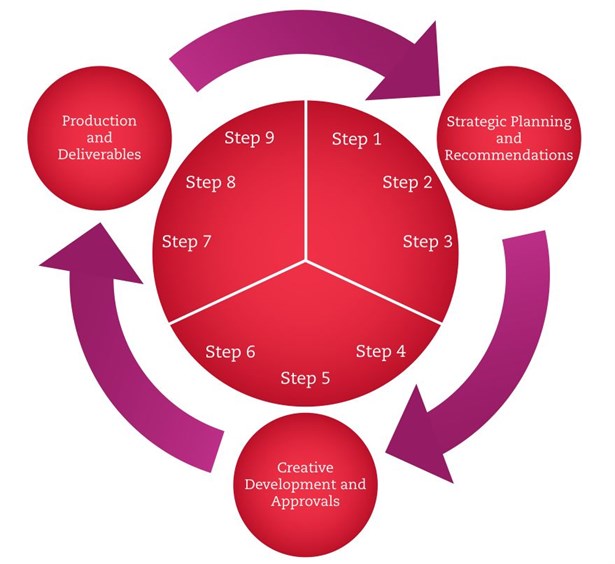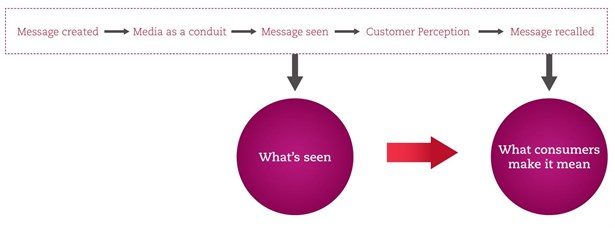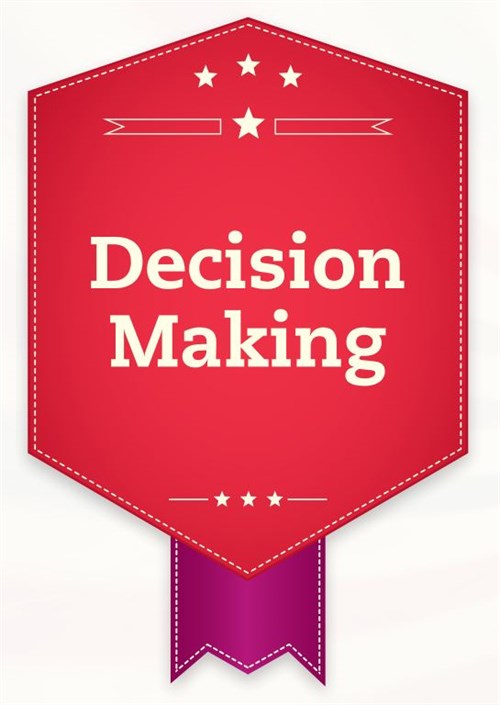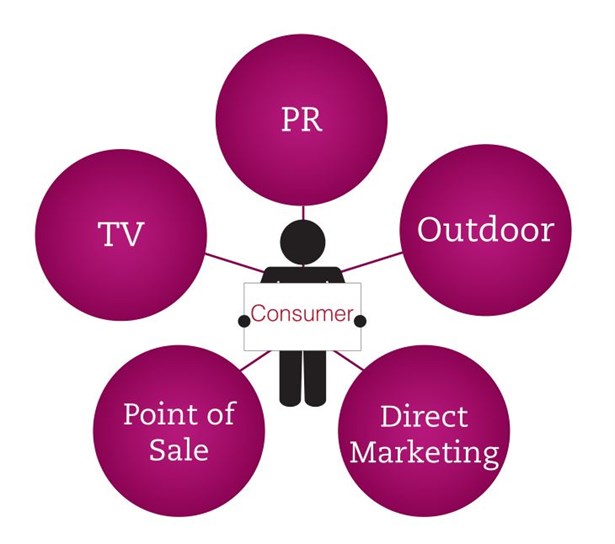Last time we introduced a collection of innovation and evaluation tools to help you identify opportunities around people, product, process and communication.
Today we review the gentle art of persuasion: how to cut through, be remembered and be loved for what you're selling by looking closely at the advertising cycle and why the emotional mind is so important in the decision making process.
It's never about what's said that matters, it's what's communicated that makes the difference.

The first thing to be clear about is always: what do you want to say? Like David Ogilvy says: "You'll never bore your customers into buying your product".
"People don't read ads. They read what interests them, and sometimes that happens to be an ad." - Ogilvy

It's now time for the magic of advertising to do its thing - to get your attention, and keep it, while we're gently walking you down the aisle of converting you from a prospect to a satisfied customer.
The creative creation process is a delicate thing. Creative people "birth" ideas and like any parent, they don't want to be told they've got an ugly child. In this post the balance between art and selling (and the art of selling) starts to be unveiled as we take our message to market and set about inspiring the masses.
"The essential difference between emotion and reason is that emotion leads to action, while reason leads to conclusions." - Donald Galne, Neurologist

Cialdini's Tools of Influence
When looking at how persuasive our messages are, it's interesting to look at the source of the persuasion. Cialdini has a famous model (below) that outlines why we find things persuasive and what affects communication's ability to do this.
Influence: The Psychology of Persuasion, Robert Cialdini 2007

Advertising

- Communicate to any and all market segments
- Generate "critical mass" of reach and frequency quickly
- Control what you say, how you say it, and where you say it
- Deliver messages efficiently
- Achieve a variety of marketing objectives
- Leverage the power and authority of customer selected media
- Overcome disinterest by converting avoidance to attention
- Generate buzz
- Build the value of brands over time
Advertising: Broad Definitions

Of course, these definitions don't completely cover all that advertising is.
There's also...
Brand consultancy/Media buying/Media planning/Merchandising/Strategic consultancy/Market research etc. etc. etc!
The Advertising Cycle

Strategic Planning and Recommendations
Step 1. Understand market
Step 2. Identify the business issue
Step 3. Identify the comms challenge
Creative Development and Approvals
Step 4. Client and creative briefing
Step 5. Concept development
Step 6. Creative approvals
Production and Deliverables
Step 7. Production
Step 8. Dispatch
Step 9. Campaign tracking and results

Whilst it may seem really simple, there is an important distinction in what we want people to recall and say about us versus the message we tell them.
For example:
If we want them to think we understand them, we don’t say “we understand you”, we show them we understand by demonstrating an insight relevant to them.
If we want them to think we’re entertaining, we don’t say “we’re entertaining”, we show them something they will find entertaining.
Neuromarketing

The typical Major League Baseball pitch...
Takes 0.35 seconds to reach the batter.
But, it takes 0.25 seconds for muscles to initiate a swing..
and, being generous... it takes 0.05 seconds for the best human to comprehend visual stimuli under perfect conditions...
That same perfect human, under perfect conditions, will take another 0.20 seconds to respond to sensory stimulus...
That's...0.35s vs. 0.50s
So how do batters hill the ball?
The Traditional Model of Decision Making


Traditionally, the brain is viewed as a dichotomy - there are only two sides and they both deal with different aspects of decision making. On the right, we have the creative, or emotional, part and on the left we have the rational, or analytical, part. We are used to viewing these as chalk and cheese and accepting that the two together are what create decisions.
Plato described it as a carriage being drawn by two horses - one powerful but unruly, the other easy to control.

The answer is simple - he starts collecting information about the pitch before the ball leaves the player's hand...
- How is he holding the ball?
- How is the meld positioned?
- What cues did he give to the catcher?
- What is the wind like?
- What is the expression on the pitcher's face?
- How far back does the pitcher lean?
- How he holds his glove?
- Which muscles tense, when and how much?
Is the wrist torqued, suggesting a curve ball? Is the elbow mxed at right angles, meaning a fast ball? Having two fingers on the seam might mean a slider. There is not enough time to compute all this data plus trajectory, wind speed, temperature or body movements before, or even after, the pitch.
This computation takes place in the subconscious where more data is processed at speeds 100 times faster than the conscious mind can perform and, importantly, where patterns in circumstances are identified and stored to prompt lightning fast expectations - these stored patterns are called Somatic Markers. A similar study showed that the best cricket players could predict the speed and position of a ball from a one second clip of the bowler's wind-up.
The New Model for Decision Making

So now we understand that the decision making process isn't quite as simple as two sides of the brain. What is actually happening is that emotions are linked to Somatic Markers, or predictions, of highly flexible brain cells, which are constantly adjusting these predictions to reflect reality.
So when you make a decision that you can't explain, such as wearing a particular colour just because you "feel like it", what you are actually doing is tapping into this hidden store of somatic markers.
So what does all this mean? Well, our emotions are actually deeply empirical. So when we feel a certain way, there actually is a reason - it's the sum of past experiences and understandings of circumstances.
Why Do We Need Somatic Markers?

Well, your rational mind, being rational, takes a long time to process data and come to a logical conclusion. Imagine if you had to spend a long time on every single decision made in a day, you'd never get anything done! What these somatic markers do is shortcut the decision making process so that you don't have to consciously analyse every single situation and possible outcome.
When Is One Faculty Used over the Other?

Circumstances can dictate when one faculty is used over another.
Of course this doesn't mean that all our decisions are made by these somatic markers - each side of the brain still has it's role to play!
How Does This Sell Things?

How interesting, right?! But what the hell does this have to do with selling anything?!
Well, these decision making shortcuts don't just happen in high stakes, high pressure situations. It turns out we are highly likely to rely on these shortcuts for low purchase decisions that don't warrant the attention of the rational mind - essentially, we are all being lazy!
In terms of marketing, think of this: 90% of purchase decisions are made unconsciously, with milk being the perfect example - you don't go to buy milk from the store and spend ages poring over which milk to buy. You walk in and grab what you drink, be it full fat, skim, soy or whatever else - we rely almost exclusively on our emotional mind to make this decision.
So this means that if you can grab "brain share" and make a habit out of purchasing your product then you'll enjoy repeat purchase as people now instinctively go for your brand.
Classic Media Theory
Great, create "brain share"...how do I do that?

Classic media theory states that if you touch someone more times (frequency) you will be more persuasive...

...and that if you vary your media you access more people (reach), and a few people again with a different media (frequency/persuasiveness).
Modern NeuroMedia Theory proves the combined engagement of senses does increase persuasiveness, but more importantly it proves the combined engagement simultaneously of senses increases persuasiveness...
What this means is that by using more media you can plant yourself within your customer's brains, creating brain share, negating somatic markers and forcing rational reappraisal. So when they walk in that store, your product is the one they pick up by default.

Example: Share of Mind Case Study
Space in the mind is limited, particularly in the rational mind. The below shows brain retention of particular brands before, during and after viewing them on American Idol.

A Couple of Examples
Martin Lindstrom's studies found that brain activity scans showed a high correlation between holistic brands and symbols of religious faith.
Apple is a brand who has tapped into these somatic markers so effectively that their purchase is akin to "blind faith".

So how do you become a "religious" brand?
Lindstrom's Elements of Religious Faith and Holistic Brands show that there are certain things you need to provide in order for your customers to deeply identify with you.

Next time we look at how to get your target audience to respond and why having a single-minded idea makes it easier for people to "get" it.

